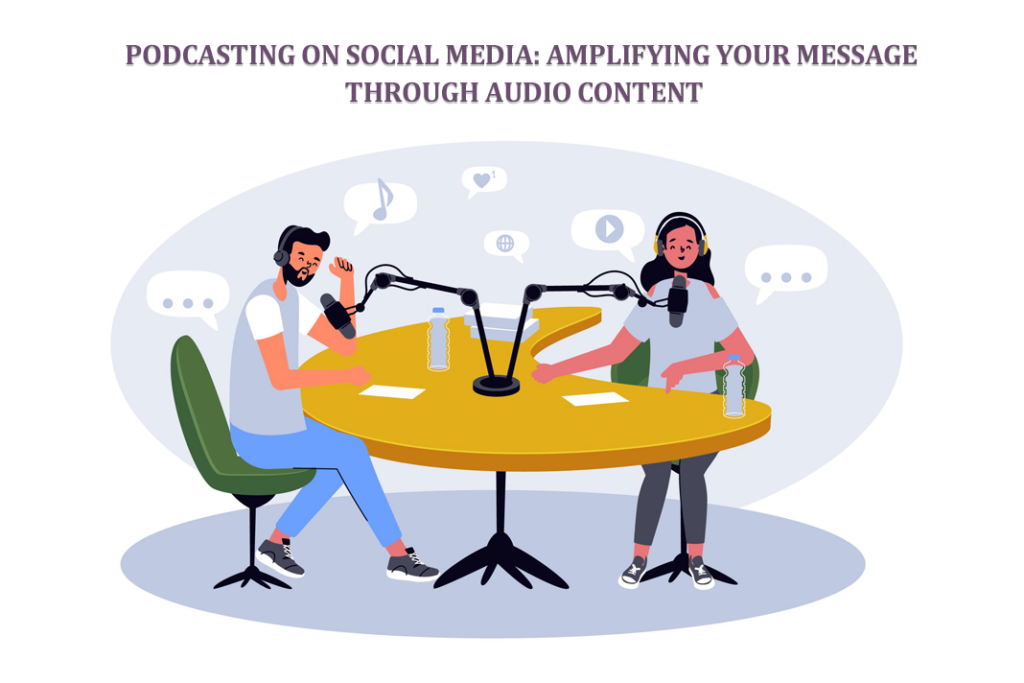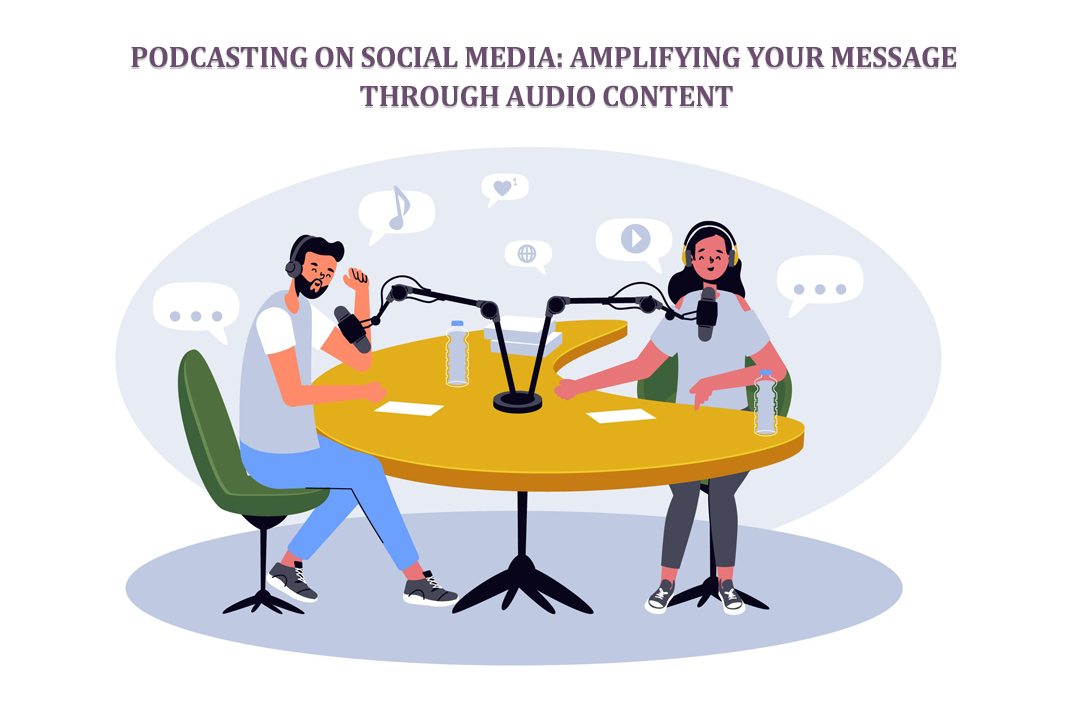
Do you ever wonder how to expand your message and connect with a larger audience using audio content?
This article is your guide to unleashing the full potential of your message through the dynamic combination of podcasting and social media.
Whether you’re a seasoned podcaster or new to the game, join us as we explore practical strategies and actionable tips to enhance your presence in the digital sphere.
Get ready to discover how to leverage platforms like Spotify, Apple Podcasts, and more to elevate your message and engage with your audience like never before.
Are you ready to take your podcasting journey to the next level and make a lasting impact?
Let’s embark on this exciting journey together and amplify your message through the power of audio content on social media!
- Define Your Niche
Defining your niche involves determining the focus of your podcast. Begin by reflecting on your passions and interests. Then, narrow your focus to a specific topic, such as cooking, sports, movies, or technology.
Opt for a niche that aligns with your expertise and enthusiasm, as this will facilitate the creation of engaging content. After selecting your niche, consider your target audience.
Consider their demographics, interests, and preferences. Tailor your content or service through WooCommerce product video to appeal to this audience and address their needs or challenges. Defining your niche makes it easier for listeners to find your podcast and know what to expect.
It will also help you stand out in a crowded market and attract a dedicated fan base who shares your interests. Don’t be afraid to get specific with your niche – the more focused you are, the easier it will be to connect with your audience.
- Plan Your Content
Planning your content means deciding what to discuss in your podcast episodes. First, choose topics that interest you and your audience. Make a list of ideas or themes you want to explore. Then, decide how you want to structure each episode.
Will it be an interview, a solo discussion, or a storytelling format? Outline the main points or segments you want to cover in each episode. Keep your audience in mind and aim to provide valuable information or entertainment. Consider the length of your episodes and how often you want to release them.
Creating a content plan helps you stay organized and ensures your podcast episodes are engaging and cohesive. It also gives you a roadmap when recording and editing your episodes.
Remember to leave room for flexibility and spontaneity, as sometimes the best podcast content comes from unexpected moments or conversations.
- Optimize Your Episodes for Sharing
Optimizing your episodes for sharing means making it easy for your listeners to spread the word about your podcast. First, create engaging content that people want to share with friends and followers. Include interesting stories, valuable tips, or entertaining discussions in your episodes.
Next, encourage sharing by adding social sharing buttons to your podcast website or episode descriptions. This lets listeners quickly share your episodes on platforms like Facebook, Twitter, or Instagram.
You can also create eye-catching graphics or quote cards that listeners can share on their social media accounts. Include your podcast name or logo on these graphics to increase brand recognition. Also, use clear and concise language when promoting your episodes on social media.
Write compelling captions or tweets highlighting your podcast’s value and encouraging people to listen.
Thank listeners for sharing your episodes and encouraging them to continue spreading the word. By optimizing your episodes for sharing, you’ll increase visibility and attract new listeners to your podcast.
- Engage with Other Podcasters
Engaging with other podcasters means connecting and interacting with people who create podcasts. Start by finding podcasts that cover topics or interests similar to yours.
Listen to their episodes and leave thoughtful comments or reviews. You can also reach out to podcasters through social media or email to introduce yourself and start a conversation. Building relationships with other podcasters can lead to collaboration opportunities, such as guest appearances on each other’s shows or cross-promotion.
Share each other’s episodes with your audiences and encourage listeners to check out each other’s podcasts. Joining podcasting communities or online forums is another great way to connect with other podcasters and share tips and advice.
By engaging with other podcasters, you’ll expand your network, learn from their experiences, and grow as a podcaster yourself.
- Create Shareable Quotes
Creating shareable quotes involves selecting memorable or impactful statements from your podcast episodes that will likely resonate with your audience. Listen to your episodes and identify critical moments or insights that stand out.
Then, extract these quotes and transform them into visually appealing graphics or text-based posts that are easy to share on social media platforms like Instagram, Twitter, or Facebook. Use eye-catching fonts, colors, and imagery to make your quotes stand out and grab people’s attention as they scroll through their feeds.
Include your podcast name or logo on the graphics to increase brand recognition and encourage listeners to check out your podcast. Share these quotes regularly on your social media channels, along with a caption that provides context or encourages engagement.
Encourage your followers to share the quotes with their networks by asking thought-provoking questions or using relevant hashtags. By creating shareable quotes, you’ll make it easy for your audience to spread the word about your podcast and attract new listeners who resonate with your message.
- Host Live Q&A Sessions
Hosting live Q&A sessions involves going live on social media platforms like Instagram, Facebook, or Twitter to interact with your audience in real time. Start by announcing the date and time of your live session on your social media channels to give your followers a heads-up.
During the live session, encourage your audience to ask questions about your podcast, topics you cover, or anything else they’re curious about. Respond to their questions and comments immediately, engaging with them directly and authentically.
Use features like polls or interactive stickers to encourage participation and gather feedback. Be prepared with some talking points or discussion topics to keep the conversation flowing if there are lulls in questions. Make sure to thank your audience for joining and participating in the session.
After the live Q&A, consider saving the video or highlights and sharing them on your social media channels for those who couldn’t attend live. Hosting live Q&A sessions is a great way to connect with your audience, build community, and show the personality behind your podcast.
- Attend Virtual Events or Conferences
Attending virtual events or conferences means participating in online gatherings where people gather to learn, network, and share ideas. Look for virtual events related to your podcasting niche or interests. Register for events that offer sessions, workshops, or panels relevant to your podcast topics.
Use the provided link or platform to join the virtual event at the scheduled time. Listen to presentations, engage in discussions, and take notes on valuable insights or information. Participate in Q&A sessions to ask questions and interact with speakers or presenters.
Connect with other attendees through virtual networking opportunities like chat rooms or breakout sessions. Exchange contact information with people you meet and follow up after the event to maintain connections. Share your experience on social media by posting about the event, sharing key takeaways, or highlighting exciting sessions.
Attending virtual events or conferences is a great way to stay informed, expand your knowledge, and connect with like-minded individuals in your industry or community.
- Experiment with Paid Advertising
Experimenting with paid advertising involves investing money to promote your podcast through online ads. Start by setting a budget for your advertising campaign and determining how much you will spend.
Choose the platform where you want to run your ads, such as Facebook, Instagram, or Google Ads. Create compelling ad content that catches people’s attention and encourages them to listen to your podcast. This could include eye-catching visuals, a catchy headline, and a clear call to action.
Target your ads to reach your desired audience based on demographics, interests, and online behavior. Monitor the performance of your ads closely, tracking metrics like impressions, clicks, and conversions. Experiment with different ad formats, messaging, and targeting options to see what works best for reaching and engaging your audience.
Analyze the results of your advertising campaign and adjust your strategy as needed to optimize performance and maximize your return on investment. By experimenting with paid advertising, you can increase the visibility of your podcast, attract new listeners, and grow your audience over time.
Conclusion
Podcasting on social media offers an incredible opportunity to amplify your message and connect with your audience meaningfully. You can reach a wider audience and make a lasting impact by leveraging platforms like Spotify, Apple Podcasts, and others.
Remember to define your niche, engage with your listeners, and consistently deliver valuable content. With dedication and creativity, you can unlock the full potential of your podcasting journey and leave a lasting impression on social media. Keep sharing your story, and let your message resonate far and wide through the power of audio content.




0 Comments